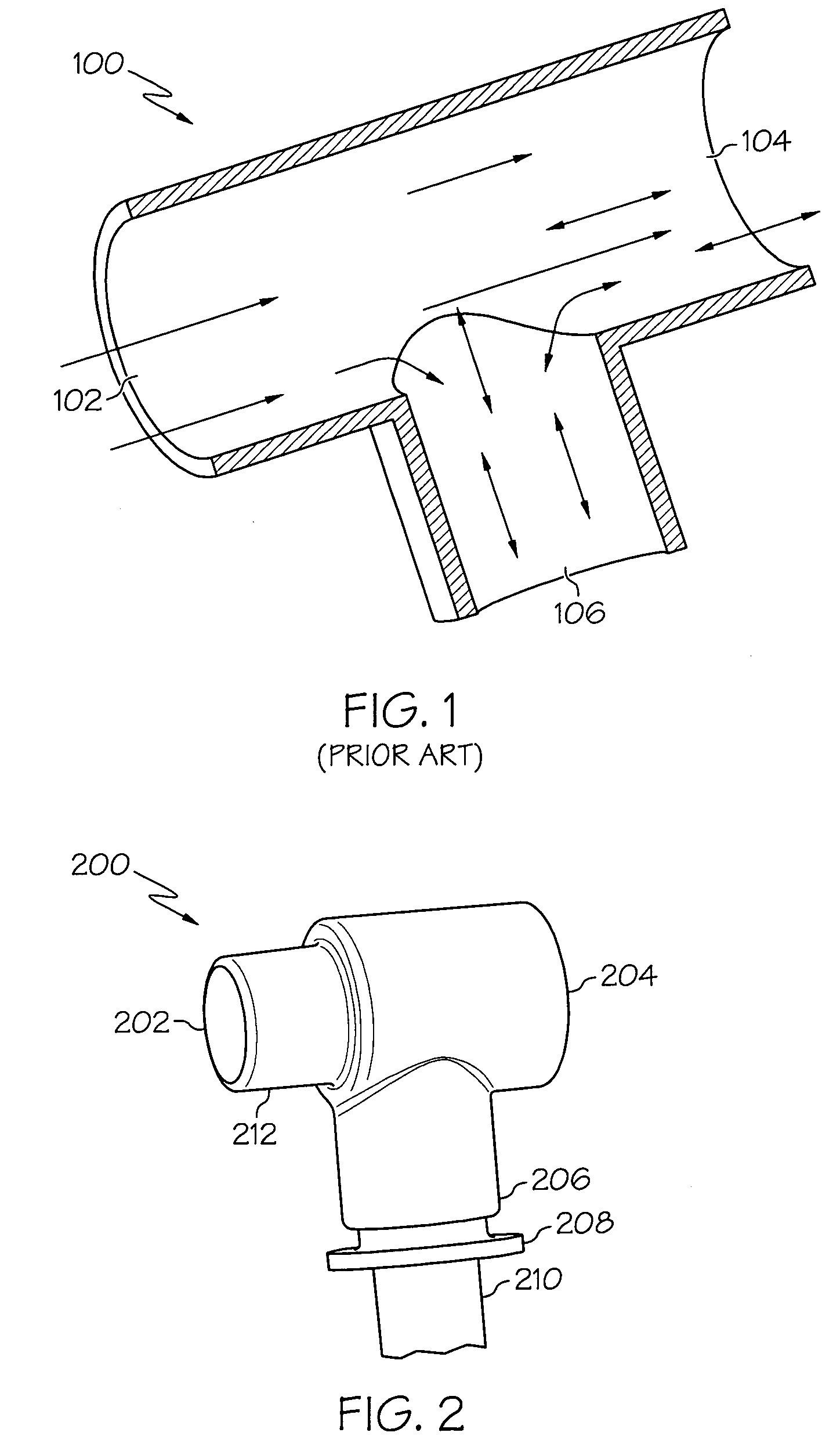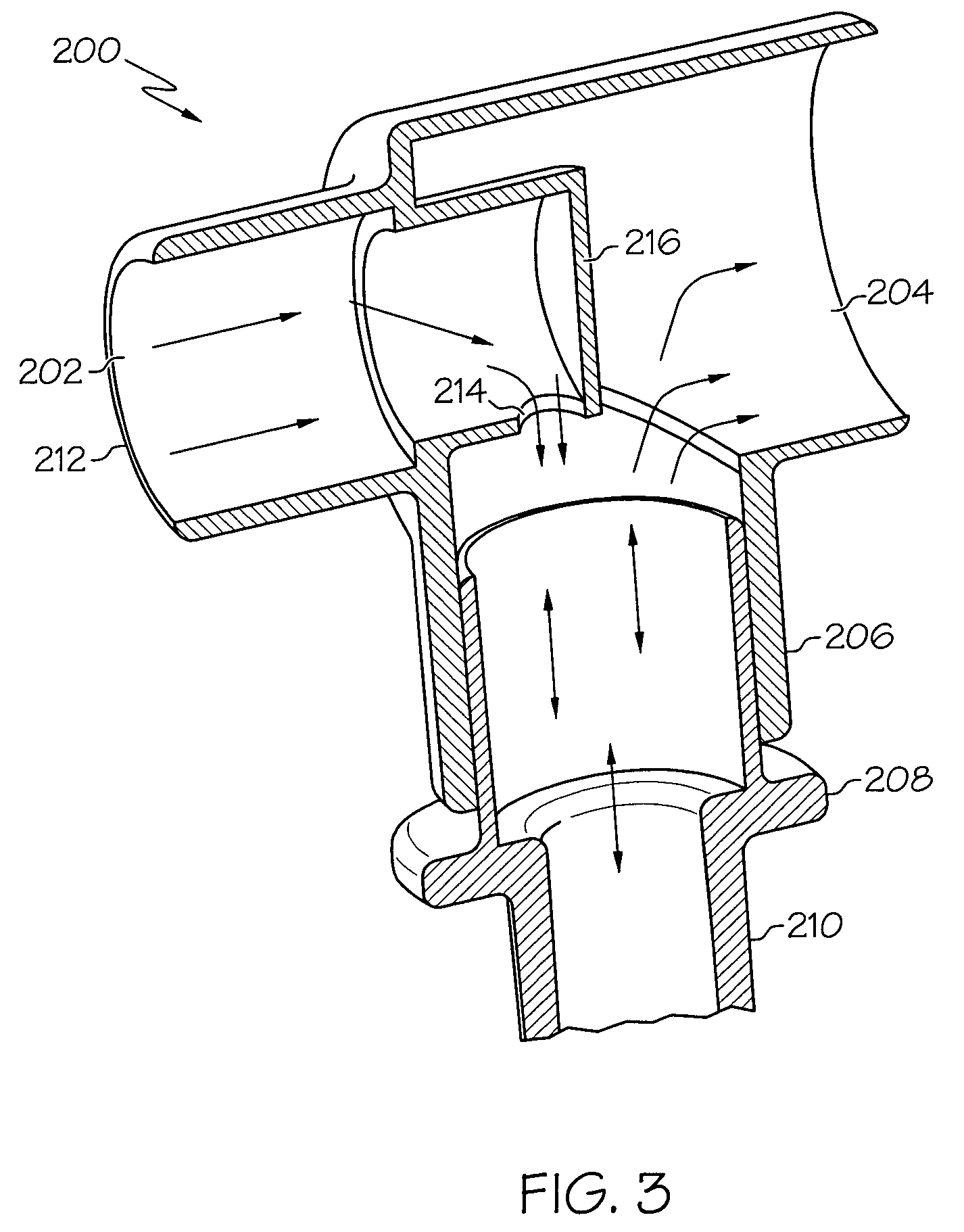Artificial airway interfaces and methods thereof
a technology of artificial airway and interface, which is applied in the direction of valves, respirators, operating means/releasing devices, etc., can solve the problems of affecting the patient's respiratory condition, bypassing the body's normal upper respiratory tract, and affecting the patient's breathing
- Summary
- Abstract
- Description
- Claims
- Application Information
AI Technical Summary
Benefits of technology
Problems solved by technology
Method used
Image
Examples
Embodiment Construction
[0025]Aspects of an artificial airway interface are disclosed in the following description and related drawings directed to specific embodiments of an artificial airway interface for use in the treatment of respiratory conditions and in assisted respirations. Alternate embodiments may be devised without departing from the spirit or the scope of the artificial airway interface. Additionally, well-known elements of exemplary embodiments of the artificial airway interface will not be described in detail or will be omitted so as not to obscure the relevant details of the artificial airway interface. Further, to facilitate an understanding of the description discussion of several terms used herein follows.
[0026]The word “exemplary” is used herein to mean “serving as an example, instance, or illustration.” Any embodiment described herein as “exemplary” is not necessarily to be construed as preferred or advantageous over other embodiments. Likewise, the term “embodiments of the artificial ...
PUM
 Login to View More
Login to View More Abstract
Description
Claims
Application Information
 Login to View More
Login to View More - R&D
- Intellectual Property
- Life Sciences
- Materials
- Tech Scout
- Unparalleled Data Quality
- Higher Quality Content
- 60% Fewer Hallucinations
Browse by: Latest US Patents, China's latest patents, Technical Efficacy Thesaurus, Application Domain, Technology Topic, Popular Technical Reports.
© 2025 PatSnap. All rights reserved.Legal|Privacy policy|Modern Slavery Act Transparency Statement|Sitemap|About US| Contact US: help@patsnap.com



